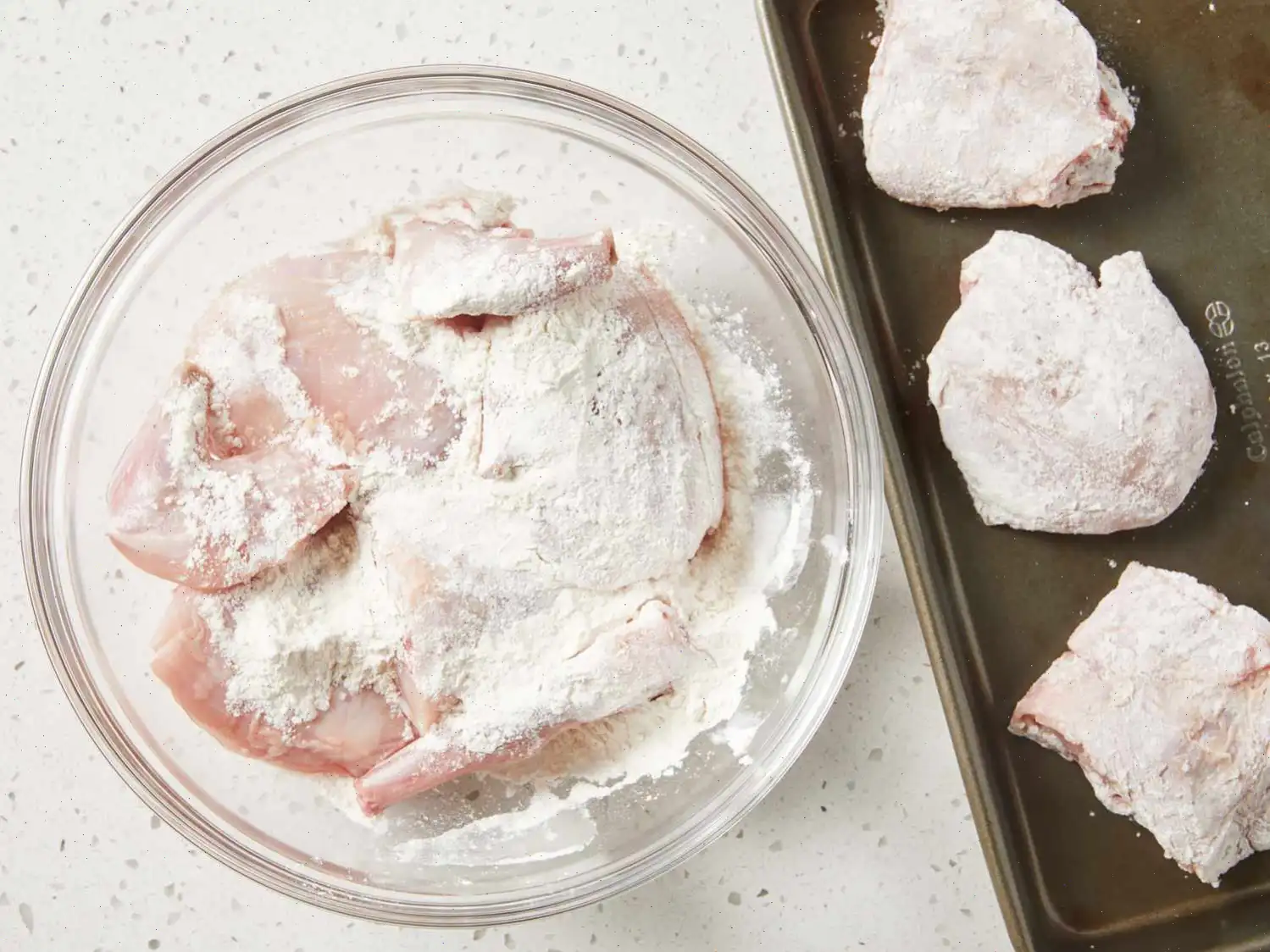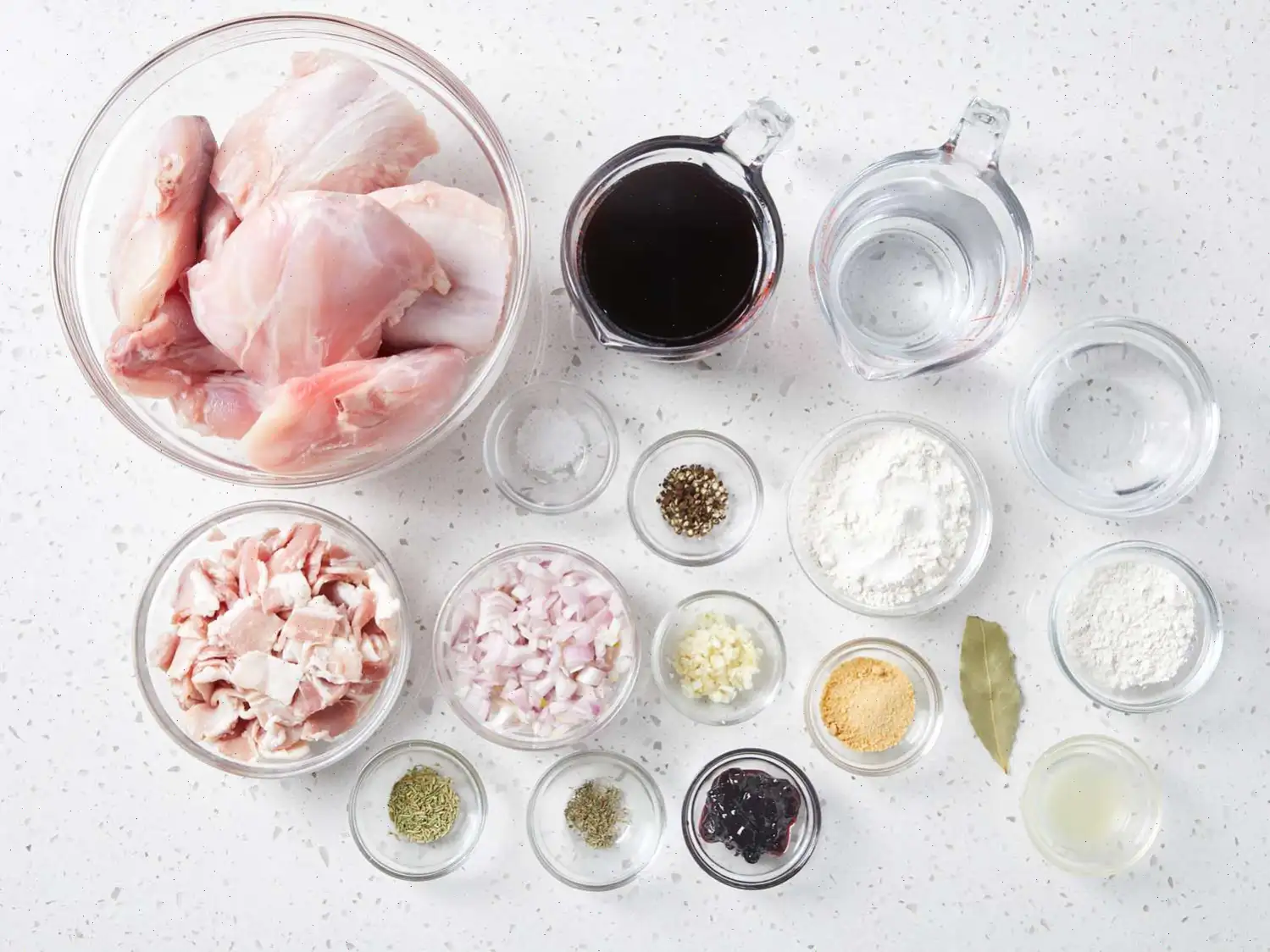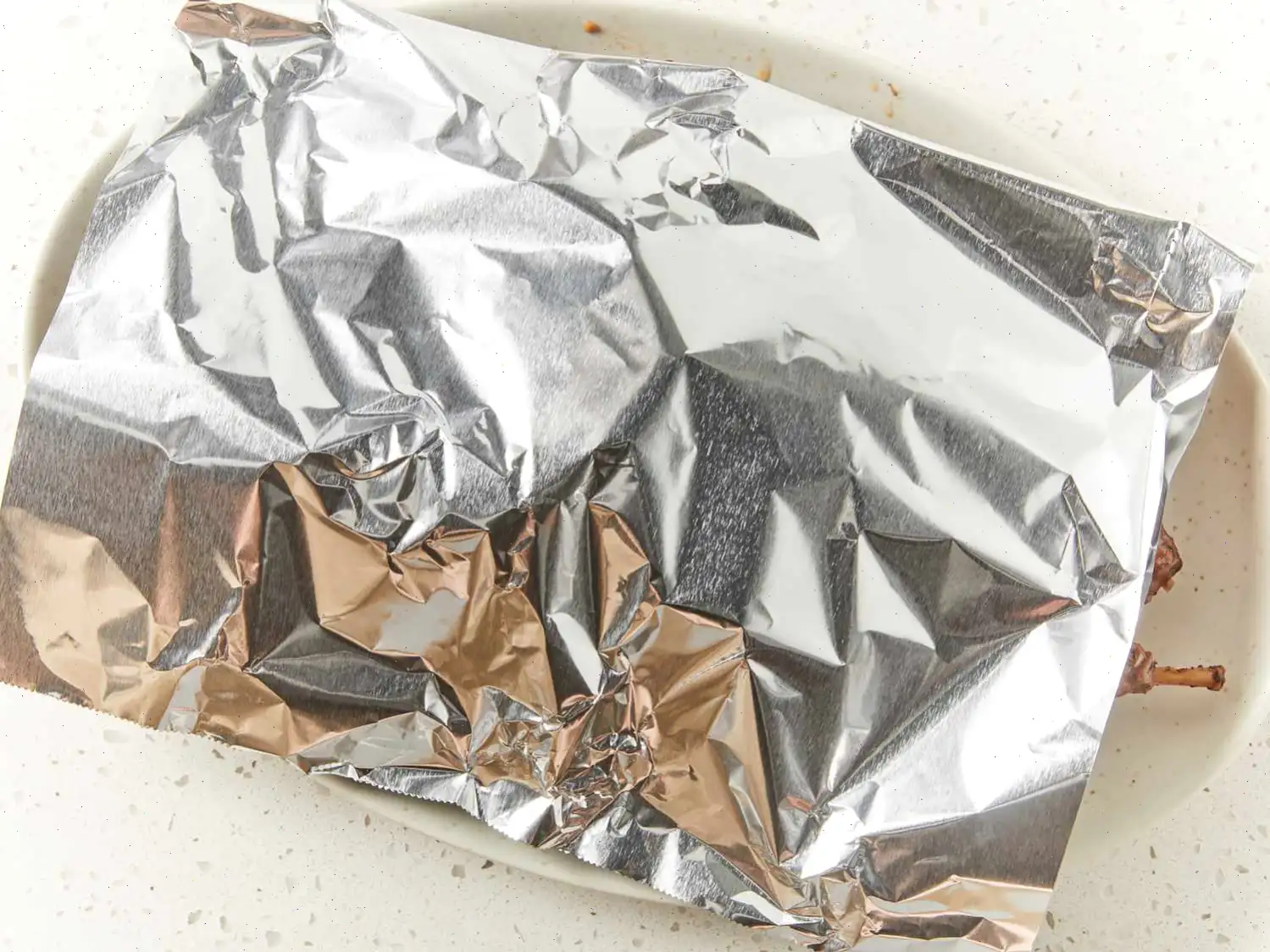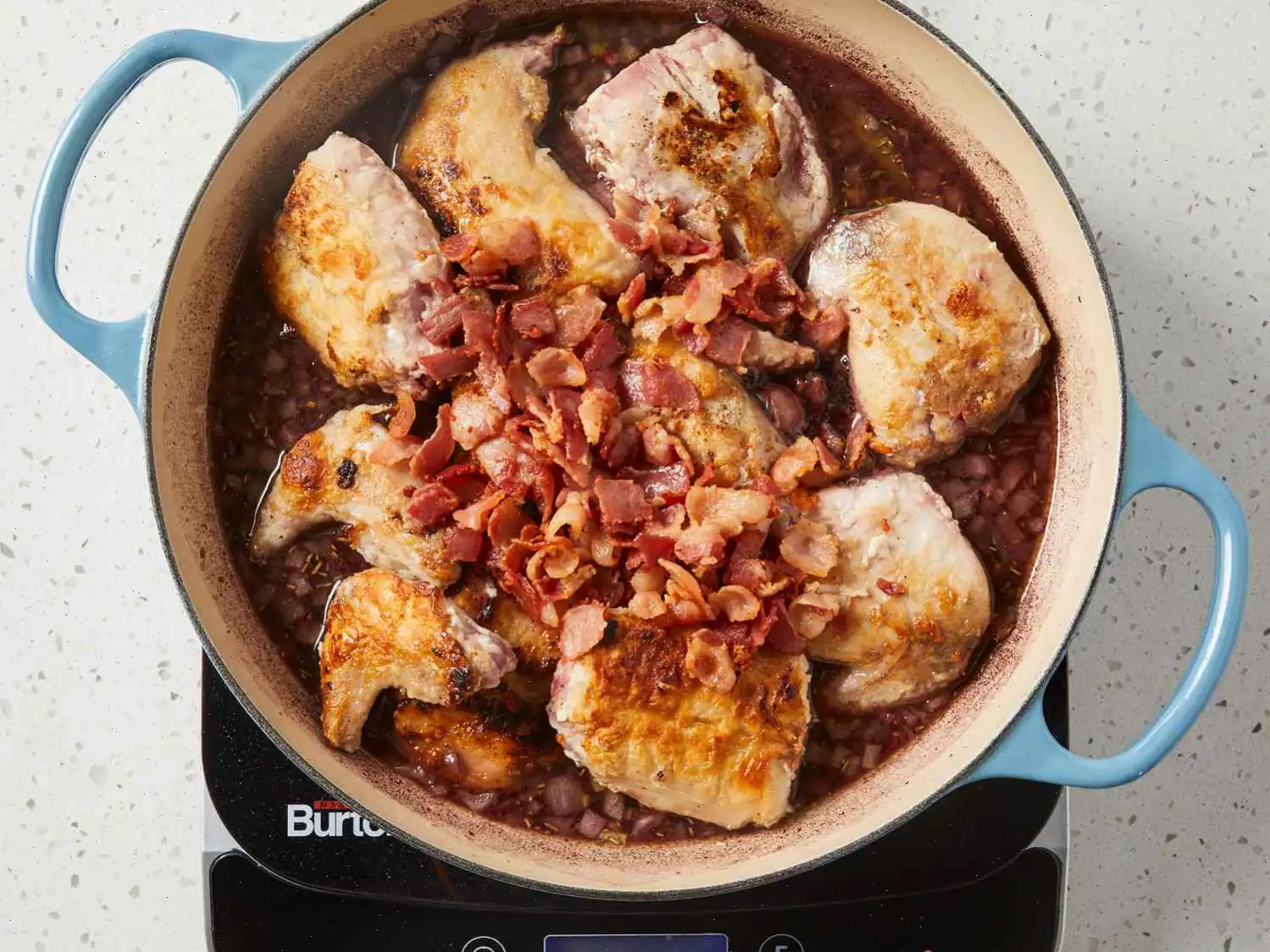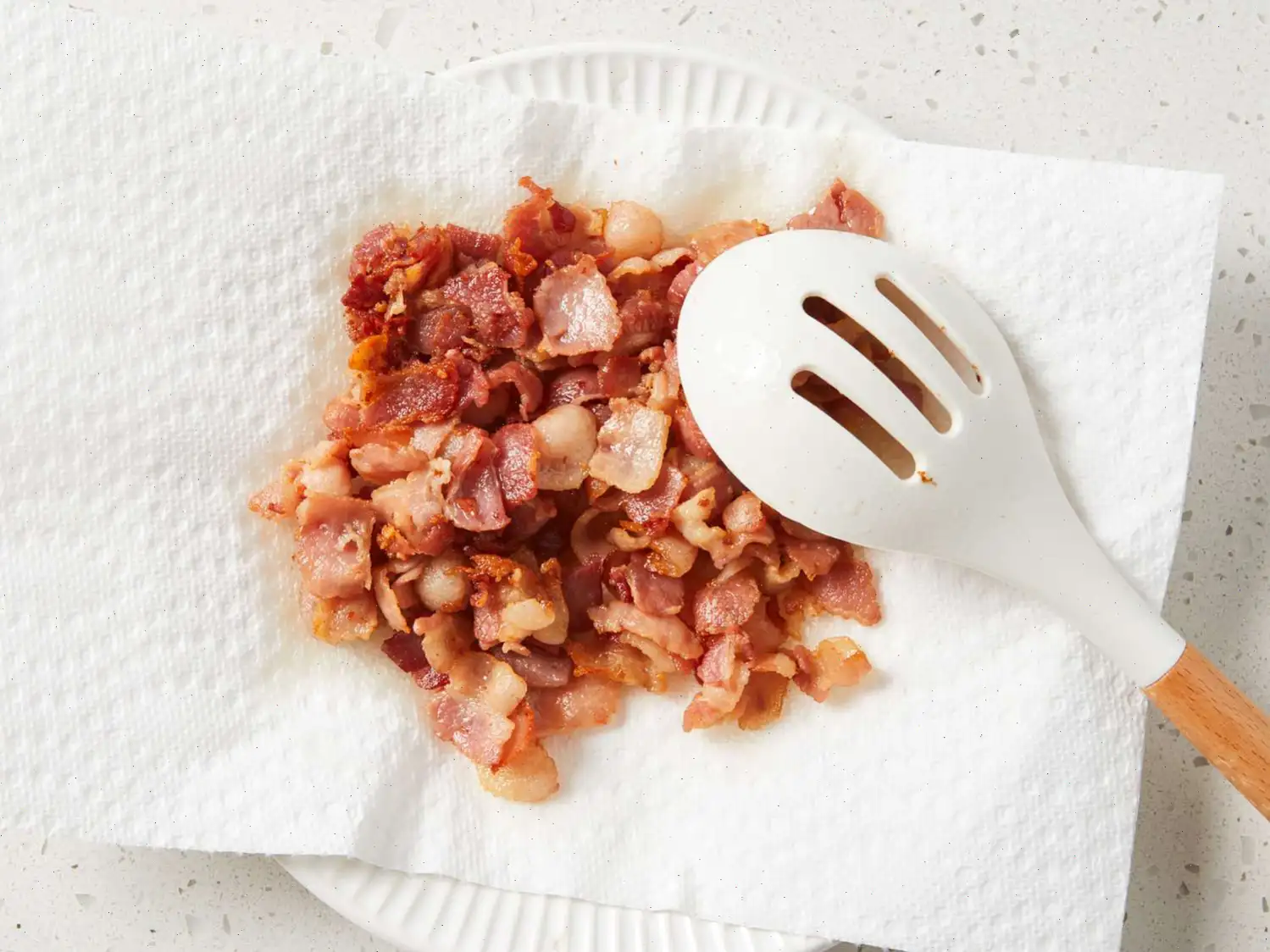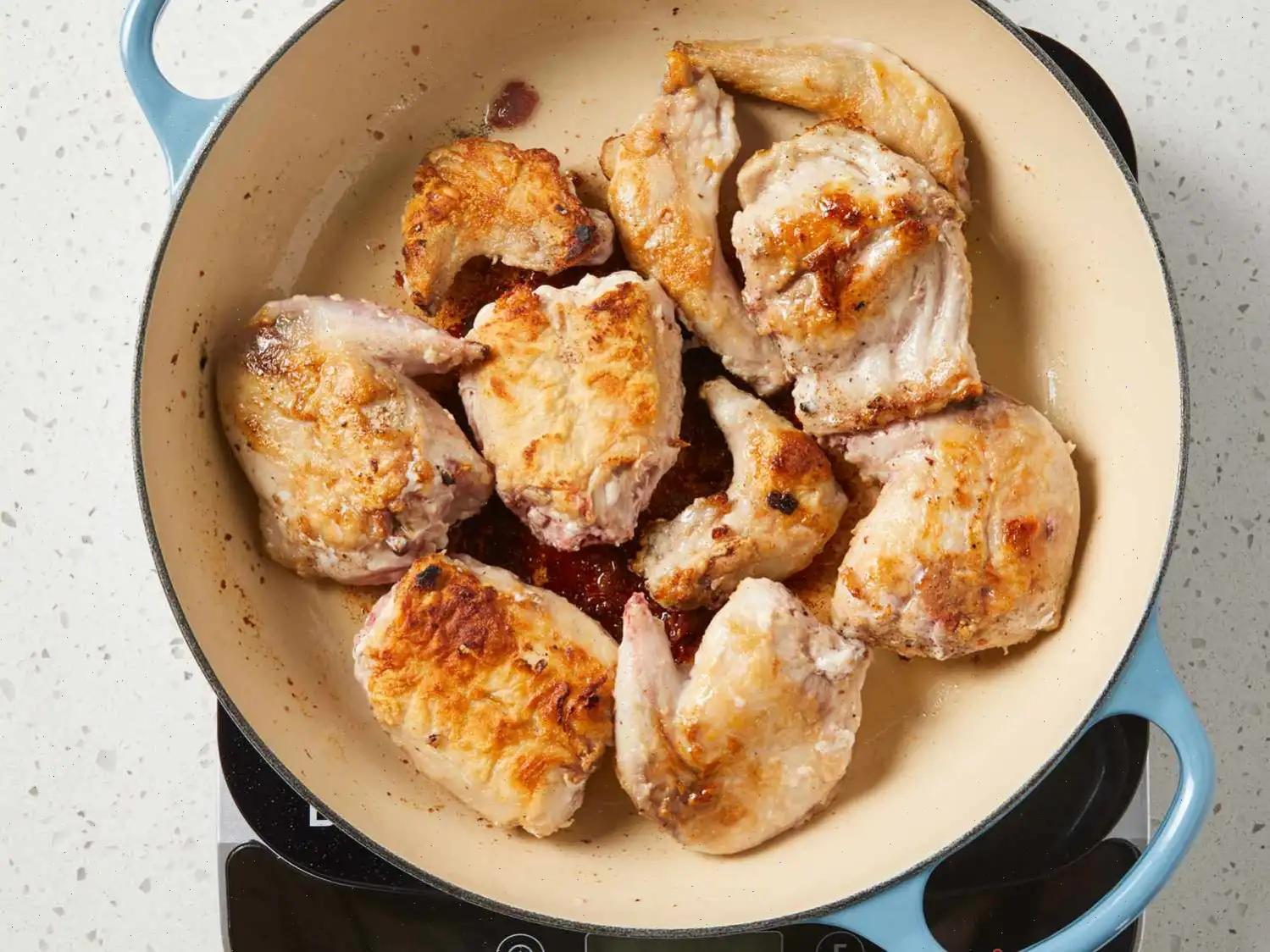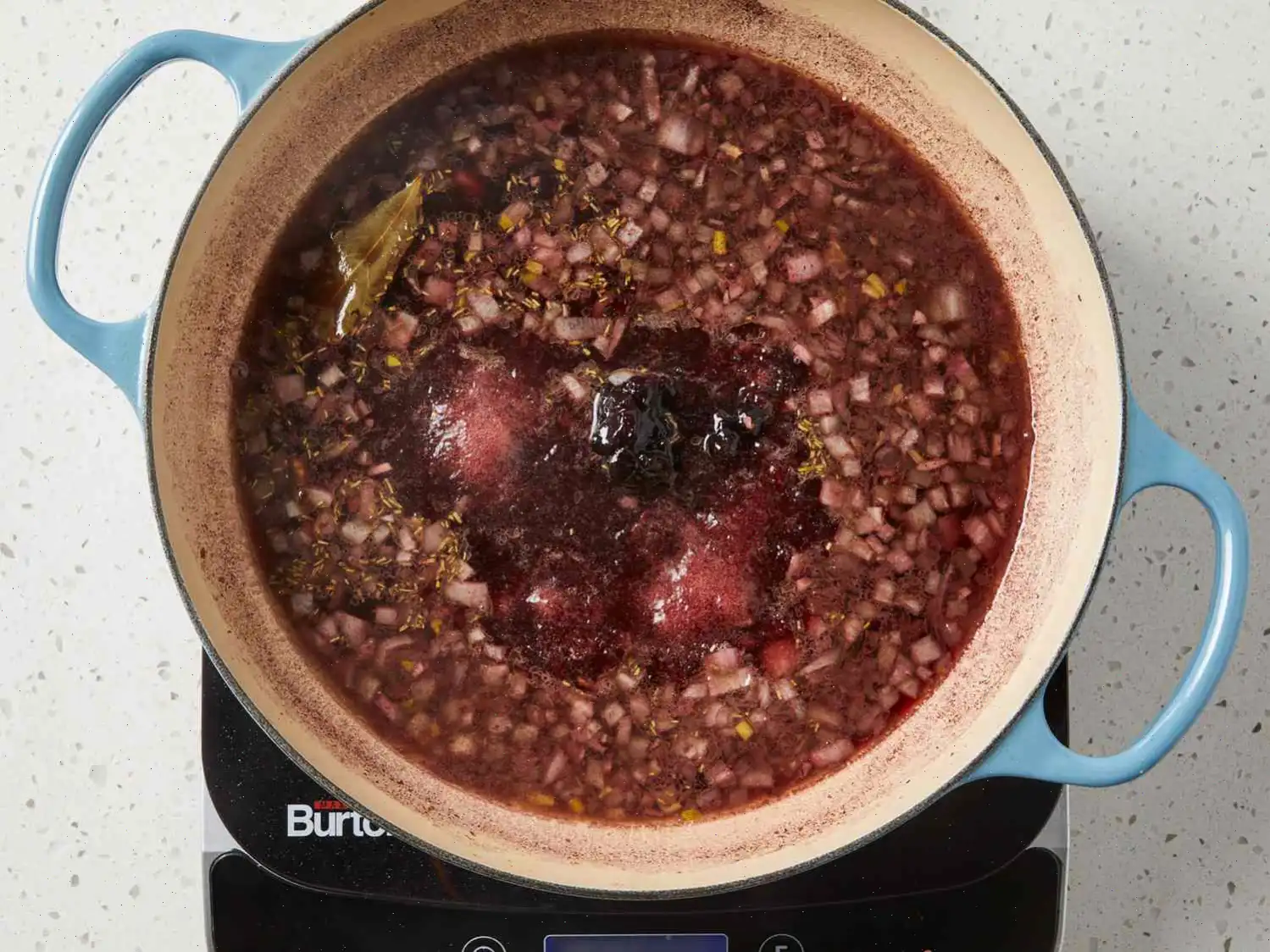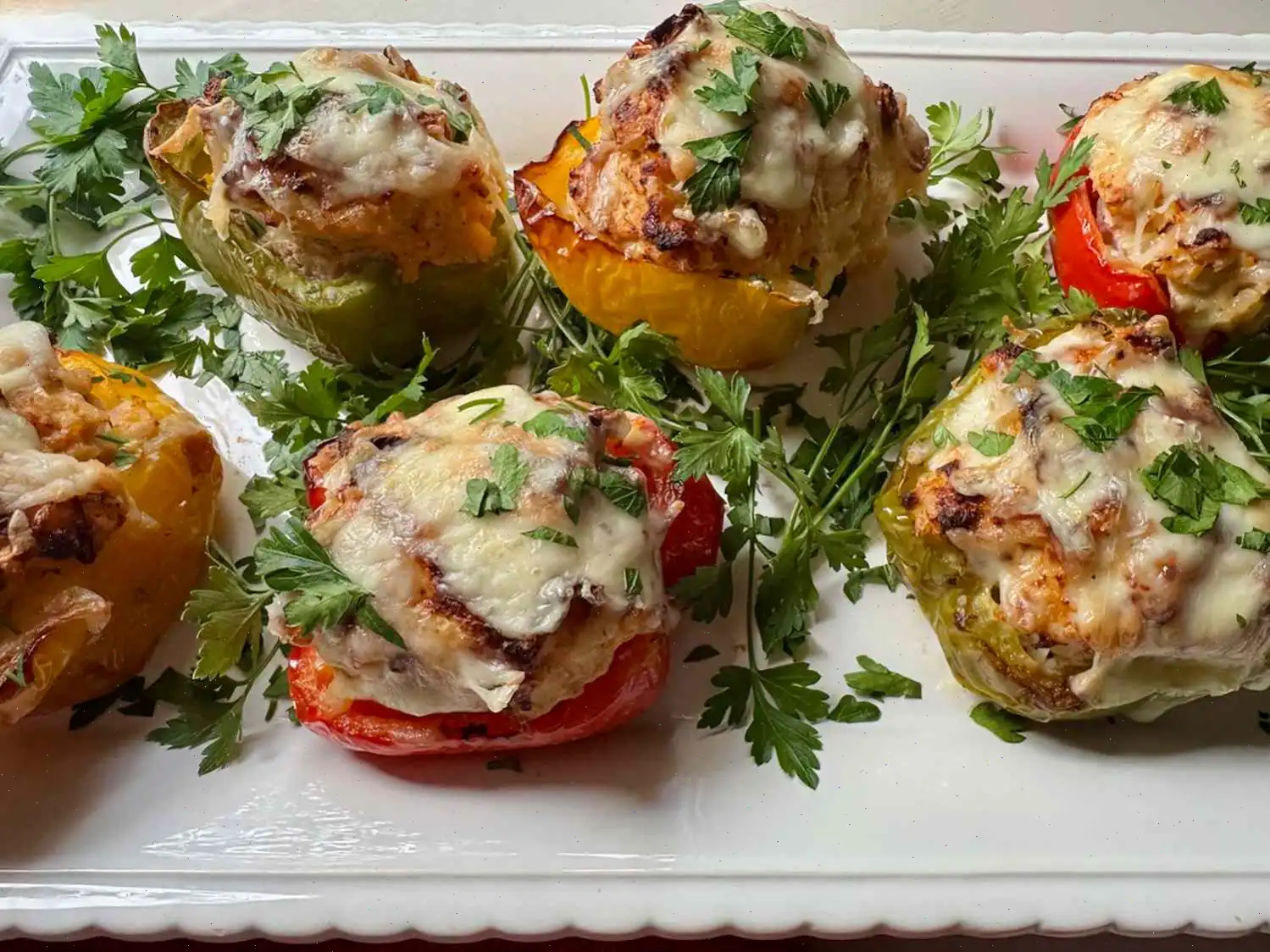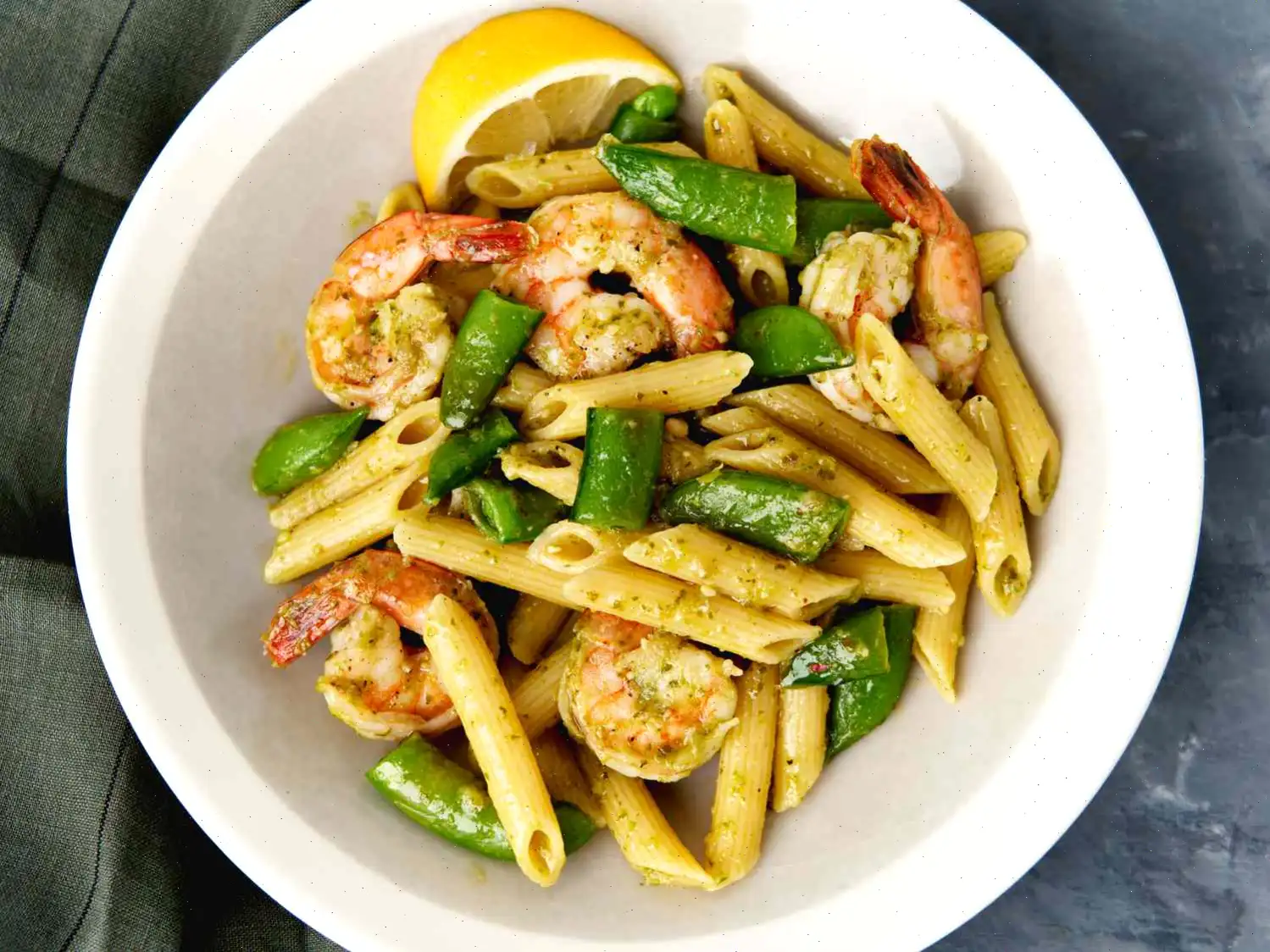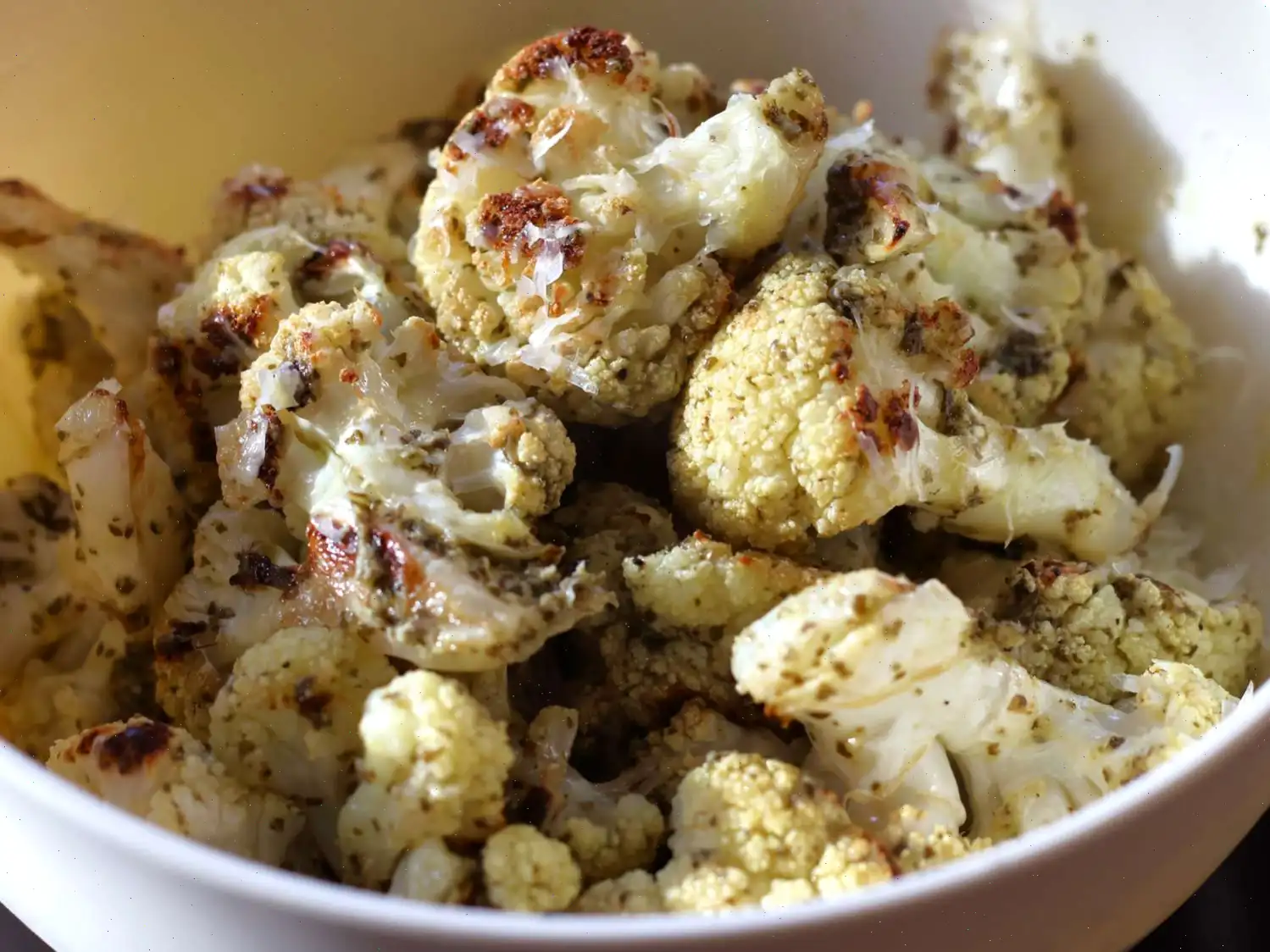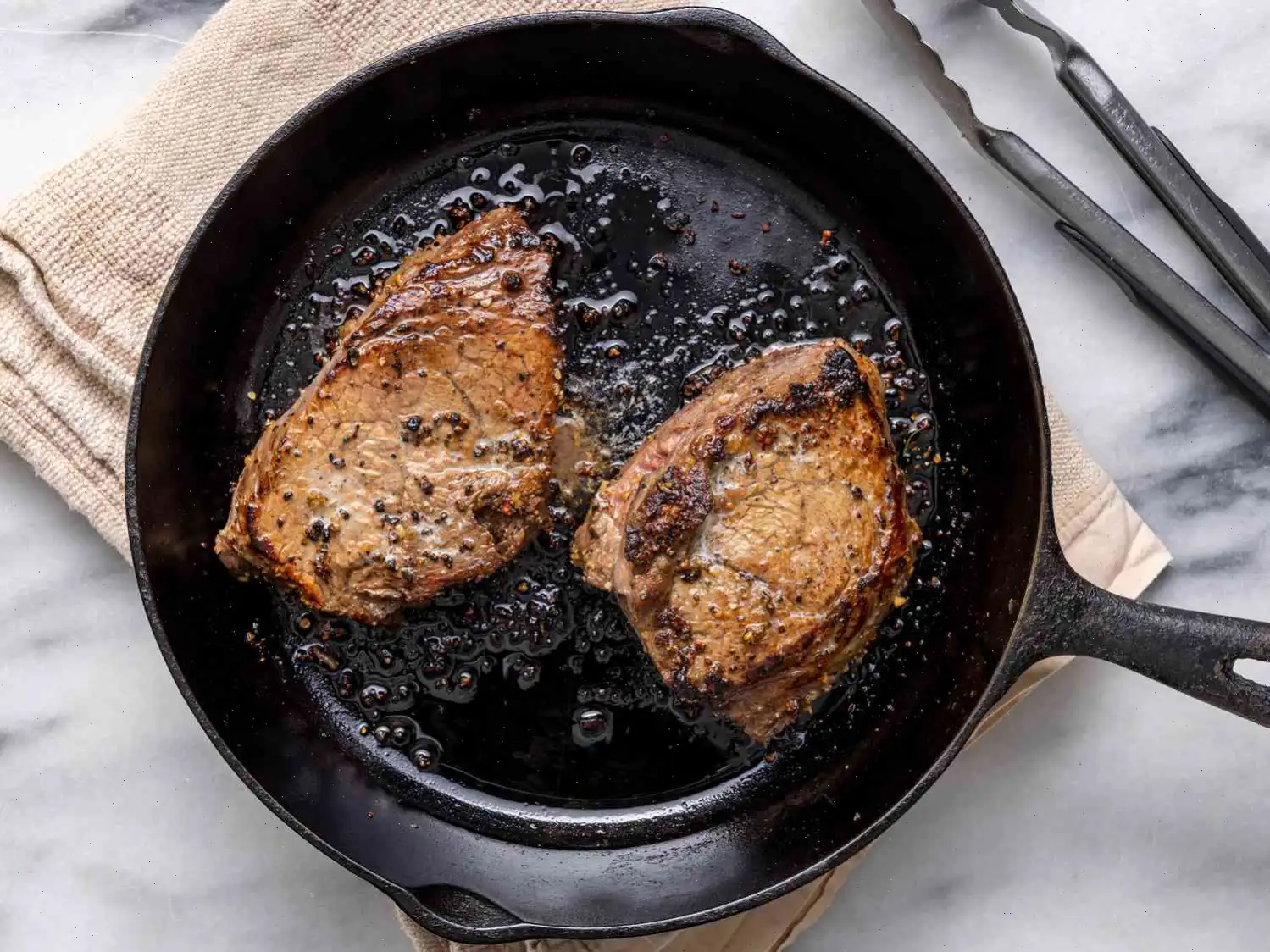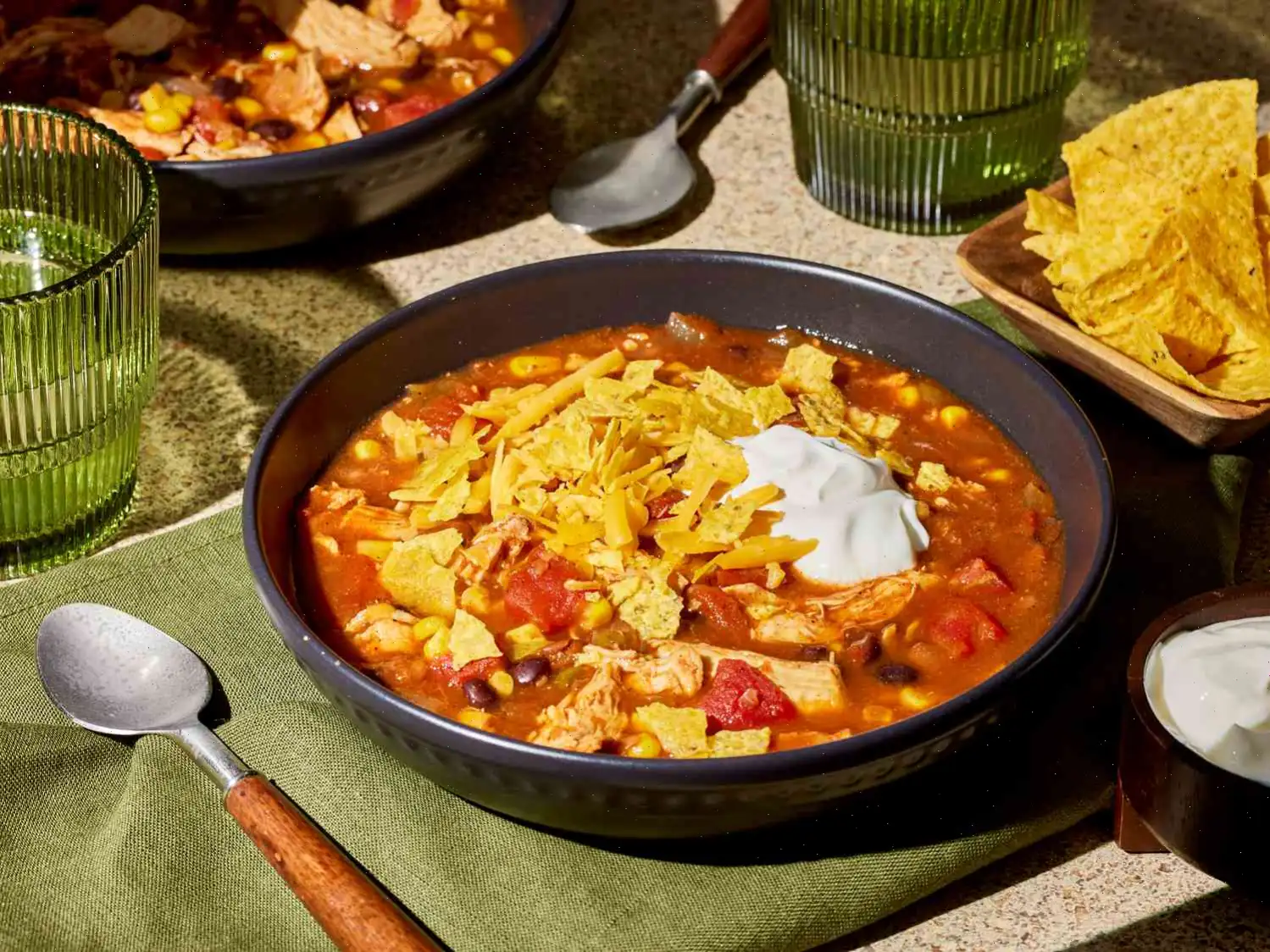
Hasenpfeffer (Rabbit Stew) Recipe
Ingredients
- pound bacon, diced
- 3 pounds rabbit meat, cleaned and cut into pieces
- teaspoon salt
- cup all-purpose flour
- cup finely chopped shallots
- 1 clove garlic, finely chopped
- 1 cup dry red wine
- 1 cup water
- 1 tablespoon chicken bouillon granules
- 1 tablespoon currant jelly
- 10 black peppercorns, crushed
- 1 bay leaf
- teaspoon dried rosemary, crushed
Gravy:
- 2 teaspoons lemon juice
- 3 tablespoons water
- 2 tablespoons all-purpose flour
- 1 teaspoon dried thyme, crushed
Directions
- Gather all ingredients.
- Place bacon in a large skillet and cook over medium-high heat, stirring occasionally, until evenly browned, about 10 minutes. Use a slotted spoon to transfer the bacon to a paper towel-lined plate and set aside.
- Sprinkle rabbit pieces with salt and coat them in flour, shaking off any excess. In the same skillet with the bacon fat, cook the rabbit over medium heat until browned on all sides. Transfer the browned rabbit to a plate and set aside.
- Drain the excess grease from the skillet, leaving about 2 tablespoons of fat. Add chopped shallots and garlic to the skillet and saut until softened, about 4 minutes.
- Add the wine, water, and chicken bouillon to the skillet, bringing the mixture to a boil. Stir in the currant jelly, peppercorns, bay leaf, and rosemary. Once combined, return the rabbit and bacon to the skillet.
- Bring the mixture back to a boil, then reduce the heat to low. Cover and let it simmer for about 1 hours, or until the rabbit is tender.
- Remove the bay leaf and discard it. Transfer the rabbit to a warm platter and cover to keep warm while you prepare the gravy.
- For the gravy, stir the lemon juice into the cooking liquid in the skillet. In a small bowl, mix the water and flour together, then stir this mixture into the skillet. Simmer over low heat until the gravy thickens.
- Stir in the dried thyme and pour the gravy over the rabbit or serve in a gravy boat on the side.
Nutrition Facts (per serving)
| Nutrition | Amount |
|---|---|
| Calories | 767 |
| Total Fat | 33g (43%) |
| Saturated Fat | 11g (54%) |
| Cholesterol | 300mg (100%) |
| Sodium | 894mg (39%) |
| Total Carbohydrate | 22g (8%) |
| Dietary Fiber | 1g (5%) |
| Total Sugars | 4g |
| Protein | 79g (158%) |
| Vitamin C | 4mg (4%) |
| Calcium | 74mg (6%) |
| Iron | 13mg (70%) |
| Potassium | 1033mg (22%) |
* Percent Daily Values are based on a 2,000 calorie diet. Your daily values may be higher or lower depending on your calorie needs.
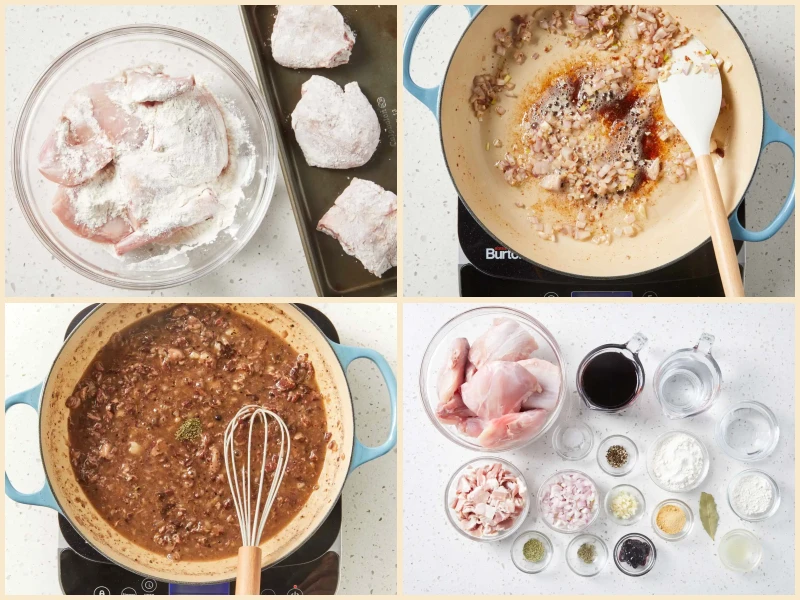

Author: Lovesmurfs
Origin and History
Hasenpfeffer, a traditional German dish, traces its origins back to the Middle Ages. It was originally a peasant meal, using rabbit meat, which was commonly available for hunting. Over time, the recipe evolved, incorporating regional variations and ingredients, and became a staple in German kitchens, especially in the countryside. The name "Hasenpfeffer" itself is derived from the German words "Hase" (hare) and "Pfeffer" (pepper), referring to the seasoned stew made from rabbit or hare meat.
Regional Variations
Hasenpfeffer is most commonly associated with the southern regions of Germany, particularly Bavaria and Swabia. In these areas, the dish is often prepared with wild game meat, especially hare, which has a stronger flavor than domesticated rabbit. Other regional variations include the addition of spices like juniper berries, or the use of different types of jelly, such as lingonberry or cherry jelly, to balance the rich flavors of the meat. The stew is traditionally served with spaetzle (German egg noodles) or potatoes, making it a hearty meal perfect for colder months.
Differences from Similar Dishes
While Hasenpfeffer shares similarities with other stews made from game meats, such as the French "civet de lapin" (rabbit stew), it stands apart due to the specific ingredients and cooking method. The defining features of Hasenpfeffer are the use of currant jelly and the marinating process, which tenderizes the meat and adds a unique sweetness to the dish. The addition of bacon and the use of a rich red wine gravy give Hasenpfeffer a depth of flavor that distinguishes it from other stews that may focus more on the savory aspects of game meats.
Where It Is Traditionally Served
Hasenpfeffer is a dish commonly served in German homes, particularly during the hunting season or at festive occasions like New Year's Eve. It is a beloved comfort food in rural areas, where hunting and the use of locally sourced ingredients are part of the culinary tradition. In addition, Hasenpfeffer is often featured in traditional German beer gardens, especially in the fall and winter months, where it pairs perfectly with a good pint of beer. The dish is also popular in German-American communities, particularly in parts of Pennsylvania and Wisconsin, where it has been passed down through generations of German immigrants.
Interesting Facts
- Hasenpfeffer was once considered a peasant dish because rabbit was an affordable and readily available source of meat in rural Germany.
- Historically, Hasenpfeffer was made with wild hare, which gave the stew a stronger, gamey flavor. Today, however, domesticated rabbit is more commonly used.
- The addition of jelly, particularly currant jelly, is meant to balance the savory richness of the stew with a touch of sweetness, a typical feature in many German recipes.
- Hasenpfeffer is often served with spaetzle, a type of egg noodle, or boiled potatoes, which are used to soak up the flavorful gravy.
- In some regions of Germany, it's traditional to prepare Hasenpfeffer in a communal setting, where families and friends gather to enjoy the meal together.
FAQ about Hasenpfeffer (Rabbit Stew) Recipe
Comments
Katherine Adams
11/12/2022 12:00:25 AM
Outstanding! This recipe is very accommodating. Lacking shallots and currant jelly, I substituted 1/3 cup diced onion and red raspberry jam, resulting in a delicious outcome. We enjoy hosting a fancy New Year's dinner at home with our children. We will certainly include this recipe in our menu this year. We raise our own rabbits for meat, and even when using one that was butchered past its prime, the dish turned out incredibly tender. I believe this recipe would also work well with wild rabbit, as it effectively eliminates any toughness concerns.
Donna Lee
09/27/2023 04:09:53 PM
Fantastic experience trying rabbit for the first time using this recipe! Instead of cooking it on the stove, I sautéed the onions and other ingredients in the Instant Pot. Following the instructions, I seared the rabbit in bacon grease and cooked it for an hour and 15 minutes to ensure it was fully cooked. We paired it with frog jelly and the gravy was absolutely delicious!
Eric Parker
09/06/2024 03:35:23 AM
I have prepared this dish multiple times and each time I am thrilled to have discovered this recipe. I have wild rabbits easily available, and this recipe is a perfect fit for them, as wild rabbit meat can often end up tough even when cooked as a stew. I chose to cook everything in a slow cooker for around 3 1/2 hours on high heat. I used parts from 4 whole rabbits, and even the forelegs turned out tender. I served it with baby carrots, baby potatoes, homemade mustard pickles, and the Cabernet I used in the cooking. Instead of currant jelly, which is not always accessible here, I opted for homemade apple jelly.
Richard Thomas
09/14/2024 02:36:37 PM
This recipe was truly exceptional. I opted for FuZion Shiraz - Malbec wine, a budget-friendly yet delightful choice that paired perfectly with game meats. Substituting currant jelly with my homemade grape preserves worked like a charm. The rabbit turned out incredibly tender, with a flavor profile that was nothing short of fantastic. What I loved most was that the recipe enhanced the meat's natural taste without overwhelming it. It struck the right balance, complementing the rabbit without overshadowing its delicate flavor, which is exactly what we aimed for. Many recipes risk drowning out rabbit's subtle taste, but this one truly shined. And let's talk about the gravy – it was outstanding. I ended up doubling the sauce recipe to ensure there was enough to make the gravy, a decision that proved to be spot on. Serving it alongside sweet roasted butternut squash and buttery herb-infused fork-mashed new potatoes was a stroke of genius. The earthy notes of the squash paired beautifully with the rabbit, while the gravy elevated the potatoes to another level. Both my mother and husband adored this meal, and I am already looking forward to making it again.
Jose King
04/17/2023 04:18:00 AM
Fantastic! I'm going to try every rabbit dish you have. Thank you!
Daniel Campbell
04/25/2025 02:25:44 AM
I recently prepared this dish and it turned out delicious. I used rabbits from my own homestead and currant jelly from a local farm stand, although next year I plan to make my own jelly as I found a thicket of currant bushes on our property. The photo I posted was taken before I added the gravy.


